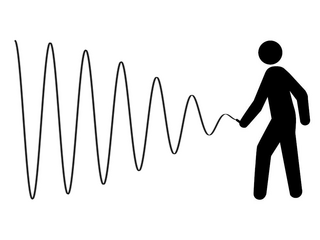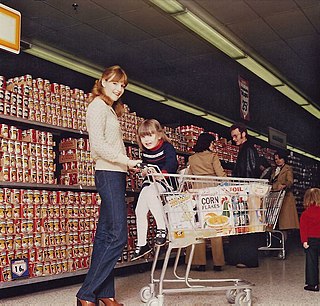 W
WConsumer behaviour is the study of individuals, groups, or organizations and all the activities associated with the purchase, use and disposal of goods and services. Consumer behaviour consists of how the consumer's emotions, attitudes and preferences affect buying behaviour. Consumer behaviour emerged in the 1940–1950s as a distinct sub-discipline of marketing, but has become an interdisciplinary social science that blends elements from psychology, sociology, social anthropology, anthropology, ethnography, marketing and economics.
 W
WA boycott is an act of nonviolent, voluntary and intentional abstention from using or buying a product, or dealing with a person, organization, or country as an expression of protest, usually for moral, social, political, or environmental reasons. The purpose of a boycott is to inflict some economic loss on the target, or to indicate a moral outrage, to try to compel the target to alter an objectionable behavior.
 W
WThe bullwhip effect is a distribution channel phenomenon in which demand forecasts yield supply chain inefficiencies. It refers to increasing swings in inventory in response to shifts in consumer demand as one moves further up the supply chain. The concept first appeared in Jay Forrester's Industrial Dynamics (1961) and thus it is also known as the Forrester effect. It has been described as “the observed propensity for material orders to be more variable than demand signals and for this variability to increase the further upstream a company is in a supply chain”.
 W
WConsumer Culture focuses on the spending of the customers money on material goods to attain a lifestyle in a capitalist economy. One country that has a large consumer culture is the United States of America. Over the past hundred years, 1900 to 2000, market goods came to dominate American life and for the first time in history, consumerism had no practical limits. Consumer culture has provided affluent societies with peaceful alternatives to tribalism and class war, it has fueled extraordinary economic growth. The challenge for the future is to find ways to revive the valid portion of the culture of constraint and control the overpowering success of the all-consuming twentieth century.
 W
WConsumer socialization is the process by which young people acquire skills, knowledge and attitudes relevant to their functioning as consumers in the marketplace. It has been argued, however, that consumer socialization occurs in the adult years as well. This field of study is a subdivision of consumer behavior as its main focus is on how childhood and adolescent experiences affect future consumer behavior. It attempts to understand how factors such as peers, mass media, family, gender, race, and culture play an influence in developing customer behavior.
 W
WConvenient procedures, products and services are those intended to increase ease in accessibility, save resources and decrease frustration. A modern convenience is a labor-saving device, service or substance which make a task easier or more efficient than a traditional method. Convenience is a relative concept, and depends on context. For example, automobiles were once considered a convenience, yet today are regarded as a normal part of life.
 W
WDelayed gratification, or deferred gratification, is the resistance to the temptation of an immediate pleasure in the hope of obtaining a valuable and long-lasting reward in the long-term. In other words, delayed gratification describes the process that the subject undergoes when the subject resists the temptation of an immediate reward in preference for a later reward. Generally, delayed gratification is associated with resisting a smaller but more immediate reward in order to receive a larger or more enduring reward later. A growing body of literature has linked the ability to delay gratification to a host of other positive outcomes, including academic success, physical health, psychological health, and social competence.
 W
WThe denomination effect is a form of cognitive bias relating to currency, suggesting people may be less likely to spend larger currency denominations than their equivalent value in smaller denominations. It was proposed by Priya Raghubir, professor at the New York University Stern School of Business, and Joydeep Srivastava, professor at University of Maryland, in their 2009 paper "Denomination Effect".
 W
WGWI is an audience targeting company founded by Tom Smith in 2009 that provides audience insight to publishers, media agencies and marketers around the world. GWI profiles consumers across 46 countries with a panel of 18m connected consumers, making it available through a subscription-based platform.
 W
WHoarding is a behavior where people or animals accumulate food or other items.
 W
WThe term hype culture refers to a cultural trend within contemporary consumer culture, that corresponds to the constant search of the last "big thing". This phenomenon circulates around the concept of expectation, more precisely it is characterized by an attitude of excessive and positive expectations that consumers attach to products, services or technological advancements which have yet to be released.
 W
WIntent scale translation is a mathematical technique used by marketers to convert stated purchase intentions into purchase probabilities, that is, into an estimate of actual buying behaviour. It takes survey data on consumers purchase intentions and converts it into actual purchase probabilities.
 W
WAn internality is the long-term benefit or cost to an individual that they do not consider when making the decision to consume a good or service. One way this is related to behavioral economics is by means of the concept of hyperbolic discounting, in which immediate consequences of a decision are disproportionately weighed compared to the future consequences. A potential cause is lack of access to full information regarding the associated costs and benefits prior to consumption. This contrasts with traditional economic theory, which makes the assumption that individuals are rational decision makers who take all personal costs into account when paying for goods and services.
 W
WMedia manipulation is a series of related techniques in which partisans create an image or argument that favours their particular interests. Such tactics may include the use of logical fallacies, manipulation, outright deception (disinformation), rhetorical and propaganda techniques, and often involve the suppression of information or points of view by crowding them out, by inducing other people or groups of people to stop listening to certain arguments, or by simply diverting attention elsewhere. In Propaganda: The Formation of Men's Attitudes, Jacques Ellul writes that public opinion can only express itself through channels which are provided by the mass media of communication – without which there could be no propaganda. It is used within public relations, propaganda, marketing, etc. While the objective for each context is quite different, the broad techniques are often similar.
 W
WOnline shopping is a form of electronic commerce which allows consumers to directly buy goods or services from a seller over the Internet using a web browser or a mobile app. Consumers find a product of interest by visiting the website of the retailer directly or by searching among alternative vendors using a shopping search engine, which displays the same product's availability and pricing at different e-retailers. As of 2020, customers can shop online using a range of different computers and devices, including desktop computers, laptops, tablet computers and smartphones.
 W
WPanic buying occurs when consumers buy unusually large amounts of a product in anticipation of, or after, a disaster or perceived disaster, or in anticipation of a large price increase or shortage.
 W
WThe pink tax refers to the broad tendency for products marketed specifically toward women to be more expensive than those marketed for men, despite either gender's choice. This phenomenon is often attributed to gender-based price discrimination, with the name stemming from the observation that many of the affected products are pink.
 W
WPsychological pricing is a pricing and marketing strategy based on the theory that certain prices have a psychological impact. In this pricing method, retail prices are often expressed as just-below numbers: numbers that are just a little less than a round number, e.g. $19.99 or £2.98. There is evidence that consumers tend to perceive just-below prices as being lower than they actually are, tending to round to the next lowest monetary unit. Thus, prices such as $1.99 may to some degree be associated with spending $1 rather than $2. The theory that drives this is that pricing practices such as this cause greater demand than if consumers were perfectly rational. Psychological pricing is one cause of price points.
 W
WA Repair Café is a place where people gather to work on repairing objects of everyday life such as electrical and mechanical devices, computers, bicycles, clothing, and other items. Repair Cafés are typically held at community locations including churches, libraries, and campuses where tools are available and where device owners can fix their broken goods with the help of volunteers. Repair Café is also a new form of the grassroots movement that aims to reduce waste, overconsumption, and planned obsolescence. Furthermore, it can re-ignite do-it-together and "Do it yourself" spirits and strengthen social cohesion.
 W
WTravel behavior is the study of what people do over space, and how people use transport.
 W
WVisual merchandising is the practice in the retail industry of optimizing the presentation of products and services to better highlight their features and benefits. The purpose of such visual merchandising is to attract, engage, and motivate the customer towards making a purchase.